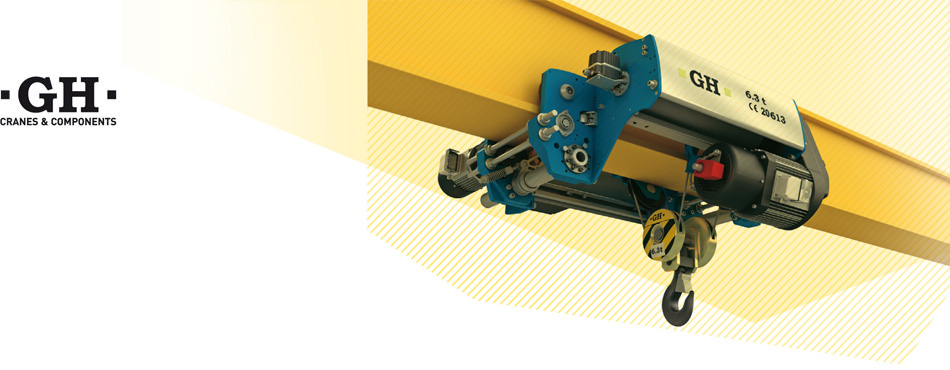Centrifugal brake

Secondary centrifugal lifting brake
GH’S SOLUTION: Secondary centrifugal brake
- Autonomously operating system with a mechanical device that takes advantage of the centrifugal force generated when the load is falling.
- The centrifugal brake is mechanically coupled to the drum of the hoist by means of a pinion (brake) – crown (drum) system.
ADVANTAGES
- Increased safety.
- Fully mechanical system of operation, so that it does not need external forces or signals.
- The brake interlock is progressive, and movement is blocked.
- The braking energy dissipates in the brake itself.
- Minimum maintenance.
- Minimum maintenance due to design and sealing. Every 5 years a complete overhaul of the brake by the manufacturer is required.
HOW IT WORKS
- The lifting drum rotates the brake by means of the crown and pinion gear.
- If the load drops at a speed higher than 20% of the rated speed, the brake will be applied due to the centrifugal force.
- The load is quickly stopped.
- After the actuation of the brake, the causes have to be analysed and the entire crane, including the brake, must be checked.
The braking time depends primarily on how close the actual load is to the rated load. For actual loads 20% of the rated load and above, the braking time is usually less than 1 second.
The braking distance depends on the actual load, and on the characteristics of the hoist. This system protects against falls caused by incidents in the gearbox, motor and the drum. It will not be activated in the event of broken cables, parts of the hook block, fixed point or pulleys.
LOOKING FOR A COMPANY AND SOLUTION THAT EXCEEDS YOUR EXPECTATIONS? Request a quote


